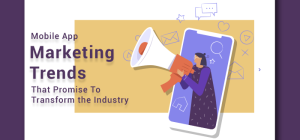The success of any marketing campaign largely depends on understanding the target audience. Identifying and analyzing the characteristics of your potential consumers is a crucial aspect of the copywriting process. To ensure your message resonates effectively with your audience, you need a of who they are, their preferences, and their expectations. This article aims to provide insight into the ideal target audience and how to identify them in the context of copywriting.
Characteristics of an Ideal Target Audience
1. Demographics: The first characteristic to consider is the demographics of your target audience. This includes factors such as age, gender, income, education, ethnicity, and occupation (Kotler & Keller, 2016). Understanding your audience’s demographics enables you to create content that appeals specifically to them, ensuring that your message is effective and relevant.
2. Psychographics: Going beyond demographics, psychographics take into account the attitudes, values, interests, and lifestyles of your audience (Kahle & Kim, 2006). By understanding what motivates them, you can craft a message that resonates with their beliefs and aspirations, ultimately leading to a greater connection between your brand and the consumer.
3. Location: Analyzing your target audience’s geographic location is essential to tailor your message according to local preferences, cultures, and trends. According to Wedel and Kamakura (2012), geodemographic segmentation is valuable, as customer preferences and behavior often align with geographic boundaries.
4. Behavioral patterns: This characteristic focuses on how your target audience interacts with your product or service. It helps you understand the factors that influence their decision-making process (Hoyer & MacInnis, 2010). Analyzing these patterns allows you to develop a content strategy that effectively influences purchasing decisions.
5. Technographics: This characteristic revolves around your target audience’s use of technology, including the devices they own and the platforms they use (Li & Bernoff, 2008). Understanding your audience’s technological preferences enables you to tailor your message according to the medium, ensuring maximum exposure and reach.
Identifying and Understanding Your Target Audience
1. Research: Begin by conducting thorough market research to gather data on the characteristics of your ideal target audience (Kujala et al., 2017). This includes demographic information, psychographic traits, geographic location, behavioral patterns, and technographic preferences. Utilize primary and secondary research methods such as surveys, interviews, focus groups, and industry reports to collect relevant data.
2. Create buyer personas: Once you have gathered sufficient information on your target audience, build detailed buyer personas to visualize your ideal customer (Revella, 2015). This helps you think about your audience as real people, making it easier to empathize and communicate with them through your copywriting efforts.
3. Analyze competitors: Studying your competitors’ marketing strategies can provide valuable insights into your target audience. By analyzing their content, you can gain a clearer understanding of the messaging that resonates with your ideal audience (Porter & Heppelmann, 2014).
4. Engage with your audience: Regularly communicate with your audience via social media platforms, surveys, and email marketing campaigns. This not only helps you understand their preferences but also strengthens the bond between your brand and the consumer (Kohavi et al., 2009).
5. Test and iterate: Continuously test your marketing strategies and content to determine whether they are effectively reaching your target audience. By regularly analyzing metrics related to user engagement, you can adjust your approach to ensure optimal results (Sharp, 2013).
Conclusion
Identifying and understanding the ideal target audience is essential for successful copywriting. By examining the characteristics of your potential consumers, including demographics, psychographics, location, behavioral patterns, and technographics, you can develop content that effectively connects with your audience. By conducting in-depth research, creating buyer personas, analyzing competitors, engaging with your audience, and continuously testing your strategies, you can gain a deeper understanding of your audience and significantly enhance the effectiveness of your marketing efforts.
References
Hoyer, W.D., & MacInnis, D.J. (2010). Consumer behavior. Cengage Learning.
Kahle, L.R., & Kim, C.H. (2006). Creating images and the psychology of marketing communication. Psychology Press.
Kohavi, R., Longbotham, R., Sommerfield, D., & Henne, R. (2009). Controlled experiments on the web: survey and practical guide. Data Mining and Knowledge Discovery, 18(1), 140-181.
Kotler, P., & Keller, K.L. (2016). Marketing management. Pearson.
Kujala, S., Mugge, R., & Miron-Shatz, T. (2017). The role of expectations in service evaluation: a longitudinal study of a proximity mobile payment service. International Journal of Human-Computer Studies, 98, 51-61.
Li, C., & Bernoff, J. (2008). Groundswell: Winning in a world transformed by social technologies. Harvard Business Press.
Porter, M.E., & Heppelmann, J.E. (2014). How smart, connected products are transforming competition. Harvard Business Review, 92(11), 64-88.
Revella, A. (2015). Buyer personas: How to gain insight into your customer’s expectations, align your marketing strategies, and win more business. John Wiley & Sons.
Sharp, B. (2013). Marketing: Theory, evidence, practice. Oxford University Press.
Wedel, M., & Kamakura, W.A. (2012). Market Segmentation: Conceptual and Methodological Foundations. Springer Science & Business Media.










If you want to improve your familiarity simply keep visiting this website and
be updated with the most recent information posted here.